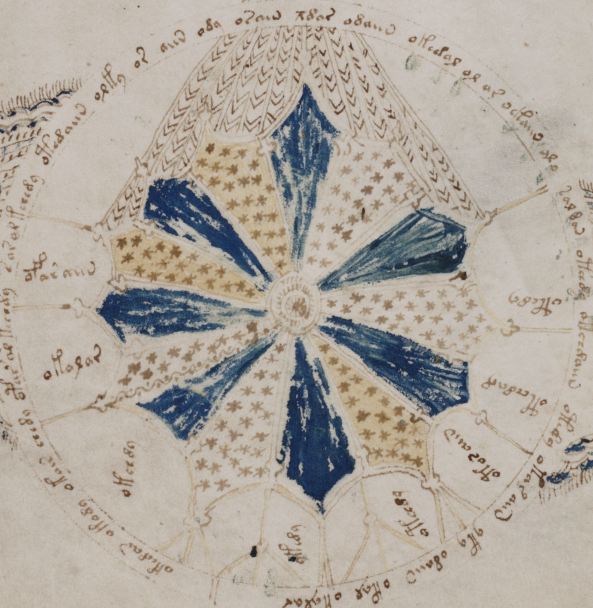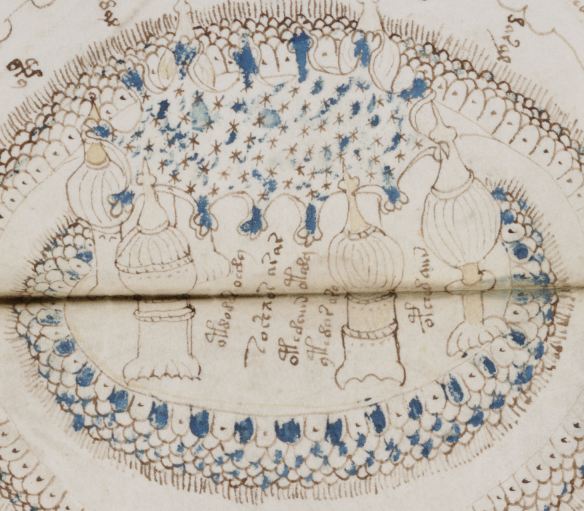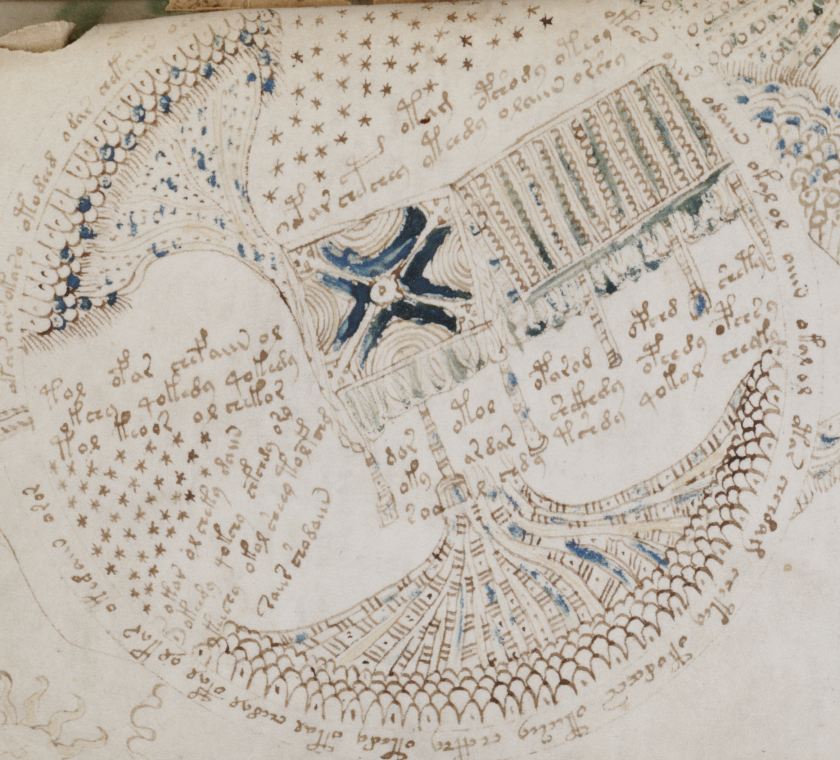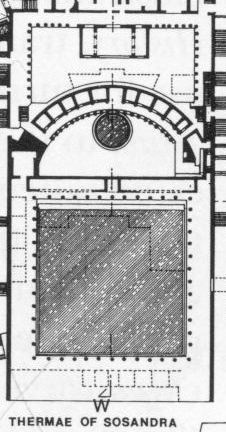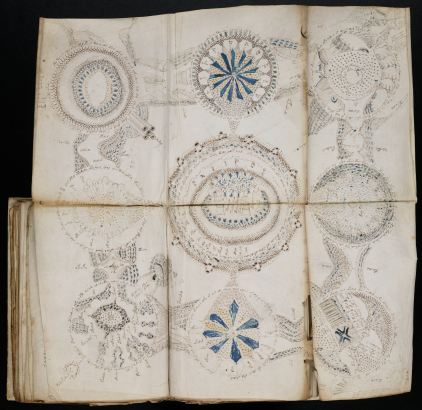 Folio 86v is known as the Rosettes page. It is a large folding out sheet which has depicted on it an interconnected group of nine circular forms. Many different interpretations have been proposed for this most complex of folios in the Voynich. 'Kabbalistic' diagrams is among the more popular, though as the established kabbalah has ten sephiroth and here we have only nine circles, that seems to miss the mark somewhat. Another idea was that these were drawings of plant cells, or even human ova, from a time long before such microscopy was possible. Most of the proposed explanations of these drawings try to see these within some context external to the Voynich manuscript, i.e. kabbalah, or modern microscopy. Instead we must try and find some way of looking at these drawings within the context of the Voynich.
Folio 86v is known as the Rosettes page. It is a large folding out sheet which has depicted on it an interconnected group of nine circular forms. Many different interpretations have been proposed for this most complex of folios in the Voynich. 'Kabbalistic' diagrams is among the more popular, though as the established kabbalah has ten sephiroth and here we have only nine circles, that seems to miss the mark somewhat. Another idea was that these were drawings of plant cells, or even human ova, from a time long before such microscopy was possible. Most of the proposed explanations of these drawings try to see these within some context external to the Voynich manuscript, i.e. kabbalah, or modern microscopy. Instead we must try and find some way of looking at these drawings within the context of the Voynich.| Voynich Balnealogical |
Voynich Rosettes |
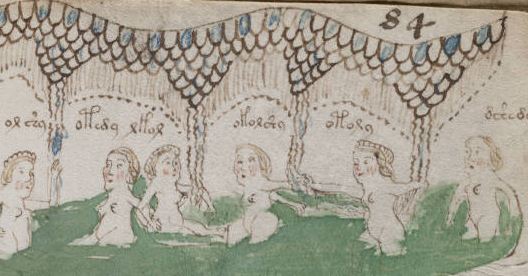 |
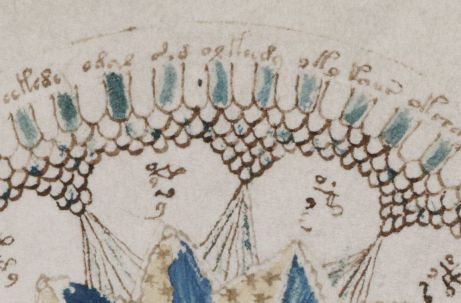 |
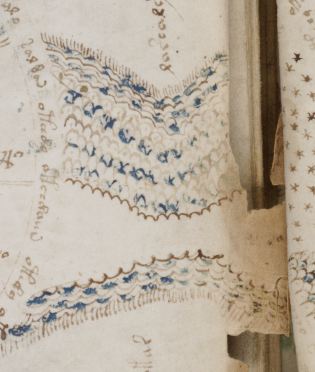 Simple path on top of a ridge with no structures. |
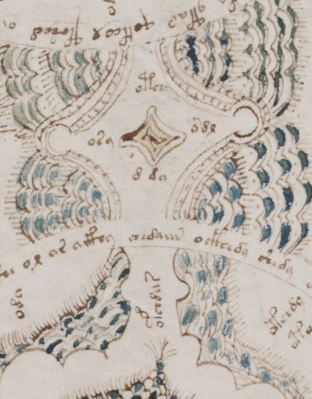 Path with a wall on each side and two small circular bastions. Within a sort of diamond shape court there is a central diamond shaped form, which could be seen as a plinth with some statuary. |
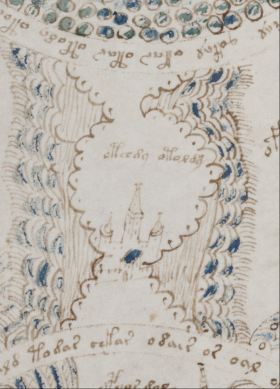 Path on top of a ridge with a gateway with three towers. |
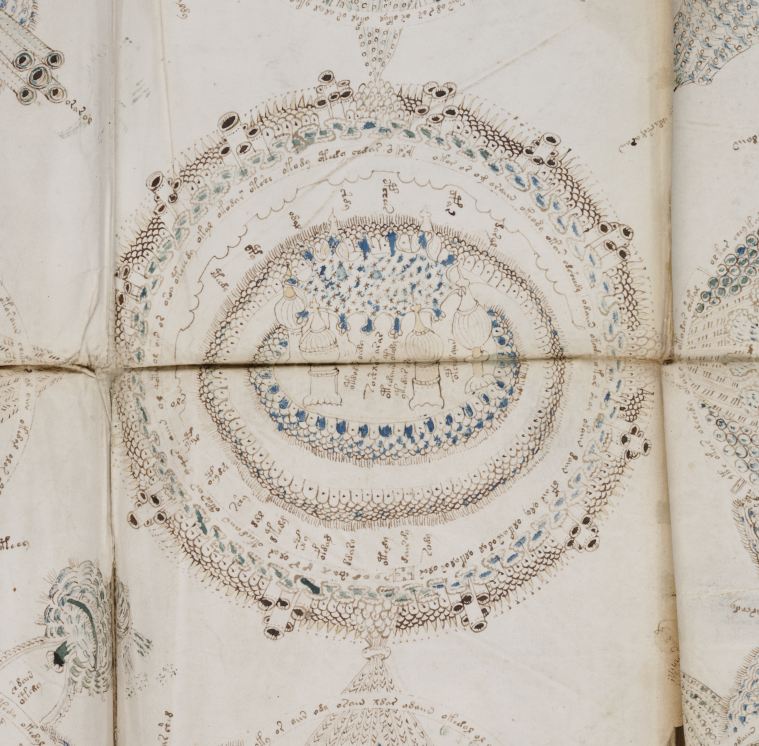
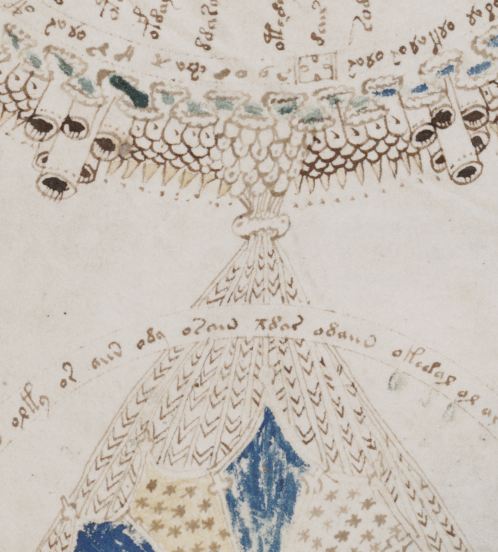 Here we seem to see an image similar to that in the Voynich Balnealogical section, where some liquid or steam descends from a triangular structure. |
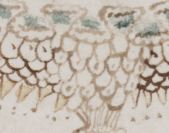 It might not be too fanciful to see this as an example of dripstone curtains or stalactite forms, such as one finds in caves with constantly dripping water. |
